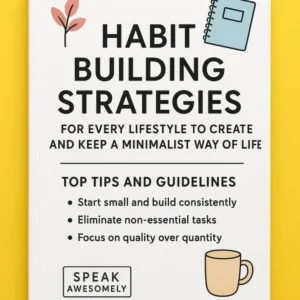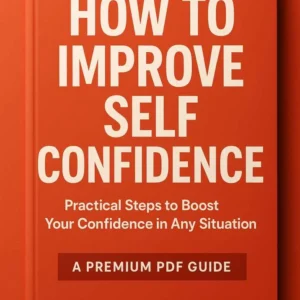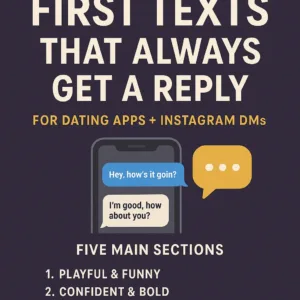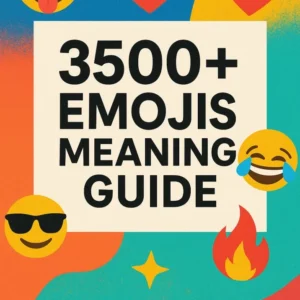The online world is far too crowded today, and facts alone rarely move people. What cuts through the noise is emotion; the kind of storytelling and communication that makes readers feel seen, understood, or inspired.
Whether you’re writing social posts, designing ads, or drafting newsletters, emotional communication is what takes your content from being ignored to sparking reactions. Even the most data-driven campaigns need a human element.
But how exactly does emotional communication improve engagement? Let’s break it down.
Creates Instant Connection
For marketers and business owners, the key to success is building relationships. Logic might convince someone why they should buy, but emotion is what makes them pay attention in the first place. People tend to respond emotionally before they analyze rationally.
Think of ads that make you laugh, posts that tug at your heart, or brand stories that inspire you. These are the messages you remember, and the ones you’re most likely to share.
For brands, leaning into emotion helps their audiences connect faster, even if they’ve never heard of them before.
Drives Action
Boosting engagement doesn’t just mean getting likes and comments. It’s also about motivating people to take the next step. Emotional cues can act as triggers that drive people to take some kind of action.
For instance, a joyful post could encourage readers to share it, while one built on sadness would inspire empathy and sometimes donations. Even campaigns like limited-time offers use emotions, fear in this case, to urge people to take action.
When you understand which emotion aligns with your goal, you can create campaigns that drive specific actions, from signing up for a newsletter to making a purchase.
Builds Lasting Stories
You could hit your audience with a dozen statistics about why your products work, but odds are, they’ll forget the numbers by tomorrow. A story, on the other hand, sticks.
Emotional communication is built on storytelling. Instead of saying what your product does, you could tell the story of a customer who benefited from your solution. You’ll realize it’s not just efficiency; it’s freedom, joy, and presence.
That’s why many brands work with a digital marketing agency, such as Kanbar Digital, to translate data into narratives that humanize the message and keep people hooked.
Boosts Loyalty
Engagement gets you the attention you want, sure, but it should also keep it. Emotional communication helps create brand loyalty because people don’t just buy a product or service; they buy into the experiences and values.
When you consistently communicate with empathy, humor, or inspiration, people start to associate those feelings with the brand itself. Over time, this approach leads to trust and loyalty, the kind that can withstand mistakes or market competition.
Sets a Perception
Sometimes, it’s not so much what you say but how you say it. A friendly and approachable tone can make a brand feel accessible, while a motivational and aspirational tone can position it as a leader. The emotional tone of communication shapes perception, and this perception influences engagement.
That’s why you need to be intentional about voice and tone.
Conclusion
At the end of the day, numbers and charts might prove a point, but it’s emotion that makes people stop scrolling, lean in, and actually care. A heartfelt story, a dash of humour, or a tone that feels genuine can do more for a brand than a dozen statistics ever could. Emotional communication isn’t a trick—it’s a way of saying, “we get you.” And when people feel seen and understood, they don’t just engage for a moment—they stick around, they remember you, and they come back.
FAQs
1. What does “emotional communication” really mean in marketing?
It’s the art of speaking to the heart as much as the head. Instead of just presenting features or numbers, you frame your message in a way that makes people feel something—joy, curiosity, empathy, even urgency.
2. Why do emotions often work better than plain facts?
Because people aren’t robots. Facts appeal to logic, but feelings shape decisions. Think about the last advert that made you laugh or tear up—you probably still remember it, long after forgetting countless fact-filled ones.
3. How exactly does emotion boost engagement online?
When something moves us, we react—liking, sharing, commenting, or clicking through. Joy makes people spread the word, empathy makes them connect, and a bit of urgency nudges them to act before they miss out.
4. Can leaning on emotion really build loyalty?
Absolutely. If a brand consistently makes you feel understood, entertained, or inspired, you start to associate those feelings with the brand itself. That bond is much harder to break than a discount code or promotion.
5. What kind of emotions do brands usually tap into?
It depends on the goal. A playful meme sparks laughter and relatability. A heartfelt story creates trust and warmth. Urgency comes from fear of missing out. Inspiration paints the brand as forward-thinking. The best brands know when to dial up which feeling.
Read Also: How to Respond to Happy Boyfriend Day Texts: Meaningful, Playful, and Loving Replies
Recommended Products

Habit Building Strategies for Minimalist Living | Speak Awesomely Guide
Original price was: $ 12.$ 5Current price is: $ 5.Add to Cart
Unshakable Self Confidence PDF Guide | Speak Awesomely
Original price was: $ 10.$ 5Current price is: $ 5.Add to Cart
100 First Texts That Always Get a Reply
Original price was: $ 15.$ 5Current price is: $ 5.Add to Cart
All Emoji Meanings Guide (3500+)
Original price was: $ 15.$ 7Current price is: $ 7.Add to Cart








